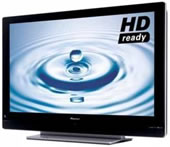Also, as Mike Armstrong points out, a good, very readable and relevant source of info is the BBC's own HD Guide internal to the BBC intranet only: Here
 For a TV picture to be HD it has to be one of three resolutions: 720p, 1080i or 1080p. There are other resolutions, but they're essentially standard definition (SD) sizes. The resolution's number is the number of horizontal lines that make up the image, analogous to its height in pixels. The letter, p or i, stands for 'progressive' or 'interlaced'.
For a TV picture to be HD it has to be one of three resolutions: 720p, 1080i or 1080p. There are other resolutions, but they're essentially standard definition (SD) sizes. The resolution's number is the number of horizontal lines that make up the image, analogous to its height in pixels. The letter, p or i, stands for 'progressive' or 'interlaced'.Interlaced Vs Progressive Images
Progressive images are displayed like a movie, one frame at a time, in rapid succession. Interlacing is the same technique used in regular TV: send half the picture at a time but do so twice as quickly. It's a bandwidth-saving technique. Each 'half' of the image comprises alternate sets of lines, so first you send lines 1,3,5,7... etc. then you send 2,4,6,8... and so on. The first set is drawn on the TV screen, then the second lot, but the speed is such that they eye doesn't notice.
Well, almost. In practice, this approach can create visible artefacts when rapidly moving images and there's a slight downgrade in the image's effective resolution. This isn't an issue with progressive pictures, which is why most US HD broadcasters show programmes in 720p not 1080i, even though the latter has more pixels and therefore should be more detailed.
No comments:
Post a Comment